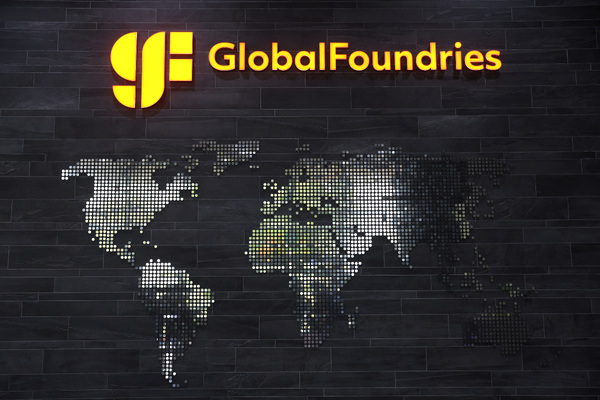Digital transformation is driving success in a physical world
Sponsored by WBM TechnologiesThe adoption of cloud services and robotic process automation can have many benefits for companies ready to progress

Adapting to new technology is essential for any organisation that wants to keep up with competitive market pressures. This is as true for organisations operating in physical worlds such as mining and manufacturing as it is for software and technology companies.
As digital transformation (DX) takes place across industries, it means different things to different people. Mark Leach, Vice President of Business Technology Services at Cameco Corporation, a Canadian clean fuel provider, suggests that there are two major areas of DX: market transformation (the development of new product lines and markets) and operational transformation (using technology to optimise business processes).
The focus of many companies, including Cameco, is on the latter – using digital technology to meet business objectives. For Cameco, these objectives include efficiency, safety and sustainability.
However, only about 30 percent of companies navigate DX successfully. Complexity and constant change provide major obstacles. A key challenge of DX is trying to establish and follow best practices while simultaneously finding ways to implement improvements and innovations. Here, Cameco has found an answer in identifying and working with “best in class” partners that have developed proven approaches to take the trial and error out of DX and change management.
The benefits of digital transformation
An understanding of the potential benefits is central to any successful DX program. To many, the benefits are simple: increased efficiency, often in the form of reduced employee headcount. But this is to misunderstand the extent of opportunity DX provides.
Indeed, a company that takes full advantage of digital technology is more likely to increase headcount (and profits) than lay off workers. One-third of new jobs created in the US over the past 25 years were types that barely existed before, in areas such as IT development and digital hardware manufacturing. In France, a McKinsey study found that the internet destroyed half a million jobs between 1996 and 2011 but created 1.2 million new positions.
This growth in employment opportunities is because DX offers significant advantages beyond efficiency. These include greater flexibility, employee enablement and support and knowledge management.

Moving towards flexibility
A central part of Cameco’s strategy is to move towards greater flexibility. Mining is a highly cyclical market and downturns can cause hardship if people are made redundant, something that is particularly problematic for residents of northern Canada. DX enables Cameco to provide greater job security, scaling up without the need to find more good employees and scaling down when necessary without having to lose people taken on earlier.
DX also enables people to work remotely. Cameco’s adoption of the modern workplace means that people in areas outside cities can still be employed in well-paid corporate jobs. In this changing landscape, Cameco was able to unlock new levels of workflow productivity and employee enablement simply by using the technologies it was already invested in – namely Microsoft 365.
Employee enablement and support
Remote working technology can be adapted to provide employee support. For example, setting up IT support teams in several locations around the world means that advice can be provided 24 hours a day, wherever your staff are.
There were additional challenges arising from remote workers being pulled away from their usual desk-based support resources, but these became a source of innovation for Cameco. Collaborating with its IT solutions partner, WBM Technologies, Cameco was able to embrace the proven best practices of adoption and enablement and come up with a new support innovation: the Power Bar.
Using Microsoft Teams, the Power Bar provides single-click, instant answers to “how to” questions via live video chat with experts. These Power Bar sessions are recorded and stored in a digital learning centre where all staff can access them on demand.
This innovative use led to WBM winning the 2021 Microsoft Modern Workplace Impact Award in Canada. As one staff member stated, “This level of technical support is unlike anything I have ever experienced in more than 20 years working at Cameco.”
Digital technology can also be used to deliver information more effectively. For example, processes normally shown as 2D flowcharts can be shown more effectively in 3D. Branches and feedback loops are made clearer. It’s easier to see where bottlenecks happen and where there are unnecessary dependencies or tasks.
Virtual reality (VR) can also be used to deliver information. Training can take place in a safe environment before people are exposed to hazardous situations, and workers can be given realistic information about new sites.
Knowledge management
DX technology increases the opportunity for collaboration, but at the same time it increases the need for robust document management (such as the ability to audit the lifecycle of documents that are handled by multiple people).
By facilitating document management, DX technology supports people as they work, such as allowing changes to documents made by team members to be surfaced to the rest of the team. New documents that team members might not have known about can be brought to their attention when they are published or become relevant. Metadata can be used in document searches. And all of this can be done with security playing a part in the background so that people don’t get access to documents they shouldn’t have access to.
Increased efficiency is also a central benefit of any DX program, including automation. This includes physical automation, such as the use of robots, cobots and drones, and software automation or robotic process automation (RPA).
Mining robots are important to Cameco. But the company has also engaged with software automation, and RPA paid off in less than nine months. Even in that short time, the work equivalent of four full-time employees was saved: fractional time savings were made across multiple roles, saving time on routine jobs and freeing employees up for tasks where they could deliver greater value.

The importance of culture
Managing culture is a very necessary part of managing digital transformation. Adopting digital technology requires a huge learning curve, so encouraging employees to be open to learning and to embrace constant change is essential.
It’s likely that at the start of any DX process there will be some cynics, often noisy ones. But most people are eager to learn new skills and try new ways of working. “Some of our biggest adopters are the people you think would be the slowest,” explains Mark Leach. “They’re finding new ways to use the technology. As people get more comfortable, as they shift from doing digital to being digital, we’re going to see an increase in adoption, and so we can then turn on and unlock more of the technology capabilities we’ve already invested in. We need to think of it as a journey, not a destination.”
Strengthening internal communications channels is also a part of cultural change, helping to build and reinforce team dynamics. This is especially important as remote working increases and onboarding new people effectively becomes a key concern for organisations.
Better internal communication also means that organisations can get knowledge from people who previously might not have said anything, including less confident people, introverts or more junior staff. With online technology, these people can be given a far stronger voice, to the benefit of the whole organisation.
Innovation drives success
One result of the cultural changes associated with successful DX programmes is enhanced innovation. This is partly a function of the better communication that digital technology enables. It is also a function of improved knowledge management and unlocking the creative problem-solving of all staff.
A “no blame” culture should be at the heart of innovation. People should be encouraged to try new ways of working, with failure treated as a learning opportunity. Cameco’s experience proves that you just need to give people the opportunity – the freedom to try and sometimes to fail – and they will embrace the challenge. In fact, the only area where Cameco remains very risk-averse is safety.
To be truly effective, innovation must be democratic, with ideas considered equally seriously irrespective of the seniority of the person making them. Cameco uses an opportunity identification process that means that anyone can submit an idea to solve a problem; these will be considered at a senior level, and if the idea is successful the person who submitted it will be involved in trialling it.
Using the collective brain power of the company in this way isn’t only about big opportunities for change. It’s just as much about the collective effect of many small changes, which taken together can have a huge effect. Mark Leach admits that not every proposed change works, but it’s worth it “as long as we are moving forward… and we are!”
Success with DX
What is notable about Cameco is the way that the company has adopted DX across the organisation and the number of different initiatives taking place as a result. One example is the way that it is using technology to engage with northern communities. Using the remote enablement team from the Power Bar, Cameco is now delivering upskilling and workplace readiness training to residents of the northern communities it operates in, generating a new funnel of potential new hires in an otherwise difficult-to-hire market.
This is how digital communication is increasing flexibility. Knowledge management is enhancing performance. Technology is being taken out of the office and into traditionally non-digital areas such as mines. Drones and robots are being used to increase safety, alongside better training provided through VR.
A huge effort in corporate learning and culture management is required to adopt these opportunities. And there is no doubt that DX would have been far less effective for Cameco had it not had access to the specialist knowledge and experience of local partners such as WBM.
But the company’s own culture is also central to its success. It doesn’t expect change overnight or get disheartened when some of the benefits prove to be quite small. As Mark Leach puts it: “True transformation is not a sprint: it’s a marathon.”
Learn more about Cameco’s path to digital transformation and the results it’s achieved at wbm.ca

Mark Leach
Vice President of Business Technology Services at Cameco Corporation

Business Reporter Team
Most Viewed
Winston House, 3rd Floor, Units 306-309, 2-4 Dollis Park, London, N3 1HF
23-29 Hendon Lane, London, N3 1RT
020 8349 4363
© 2025, Lyonsdown Limited. Business Reporter® is a registered trademark of Lyonsdown Ltd. VAT registration number: 830519543





